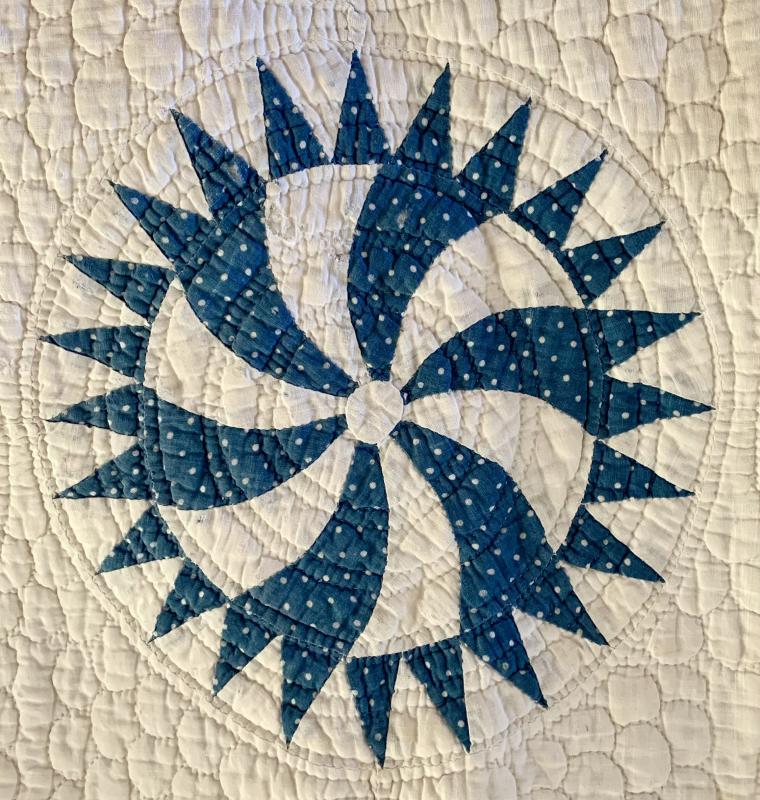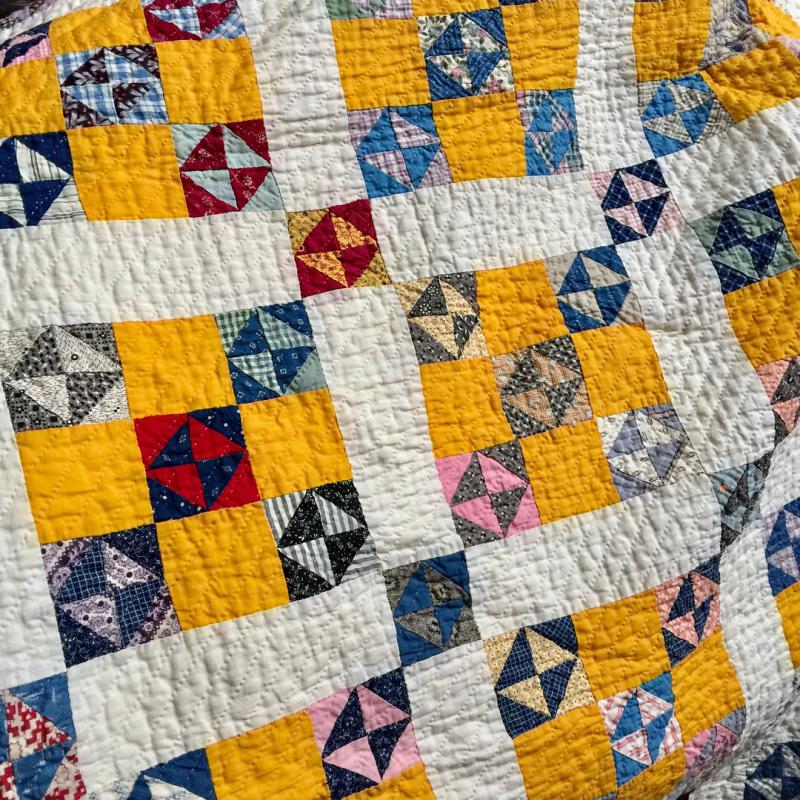Welcome to Moda Fabrics!
Meet Jody Sanders
Meet Jody Sanders
Each month we will be introducing you to some various friends in the industry as they join us as regular columnists, sharing their specialties and bots of interest and wisdom. Today, we are welcoming Jody Sanders.

Jody Sanders has been quilting since 1989, but has been sewing and crafting since her days as an Iowa 4-H member in the 1970s. Although she has dabbled in macramé, cross-stitch, knitting, jewelry making, and dyeing fabric, quilting has remained a constant in the last thirty years. Jody was a magazine and book editor for fifteen years and contributor to video and podcast content for allpeoplequilt.com. Her favorite techniques include English paper piecing, foundation paper piecing, and wool appliqué. In addition to making quilts, Jody is an avid collector of antique quilts, miniature sewing machines, and vintage sewing notions. She loves attending quilting retreats and belongs to several quilting guilds. She enjoys going to estate auctions, flea markets, and thrift stores.
Now more from Jody....
I collect vintage and antique quilts. The two questions I get asked most often are, “How old is this quilt?” and “What is this quilt worth?”

You will see the terms antique and vintage used interchangeably, but for most collectors antiquedescribes quilts that are more than 100 years old and vintage is the term for 50–100-year-old quilts. The term circa in front of a year means “about”, so circa 1920 can mean the quilt is dated between 1910-1930, or ten years on either side of the year 1920. Quilts are dated by the last, or newest, fabric in the quilt. For example, if a quilt top was made in the 1930s but the backing and quilting wasn’t added until the 1970s, it is considered a 1970s quilt by collectors and appraisers.

Some things to take into consideration when determining value of a quilt are: 1. Condition of quilt- are fabrics intact, with no split seams, and colors appear to be original with no fading. 2. Difficulty of pattern- an intricate design like New York Beauty is worth more than a Nine-Patch. 3. Age of quilt or time period. 4. Technique used- needle-turn appliqué or expert hand-quilting is usually worth more than a tied quilt. 5. Provenance or documentation, who was the maker of the quilt- was it made by someone well-known, did it win a prize or an award, was it made for a specific event, or was it published in a book or magazine. 6. Current color and cultural trends- two color quilts- especially red-and-white and blue-and-white quilts are always popular, but utilitarian quilts have become more valued recently because of the trend of recycling/repurposing.

I have spent the last 20 years collecting quilts and my main rule is: I love it! and when I don’t love it anymore, I can sell it for what I paid for it.
The most important thing is to educate yourself so you can make informed purchases. There are many reproduction quilts in the marketplace that are advertised as “handmade” or “antique” that are not. I have spent a lot of time at auctions, flea markets, estate sales and re-sale stores. I am a member of the American Quilt Study Group https://americanquiltstudygroup.org/ and the Iowa Illinois Quilt Study Group, and enjoy going to museums like the Iowa Quilt Museum https://www.iowaquiltmuseum.org/ , Kalona Historical Village, and the International Quilt Museum https://www.internationalquiltmuseum.org/.
In the next few months I’ll take you along with me on my travels as I search for vintage and antique quilts, sewing machines, and other sewing notions.
I may run into you at any of the above places and if so be sure and say hello!
You can follow me on instagram -@sewmorequiltsmom.
- Jody
